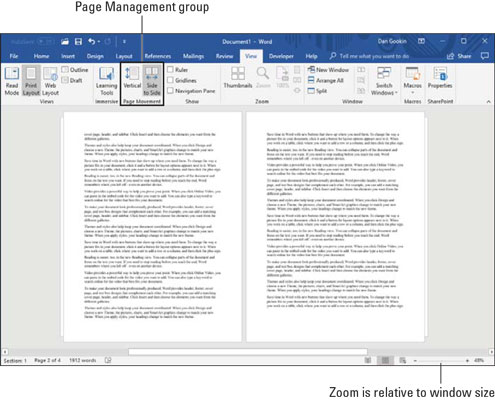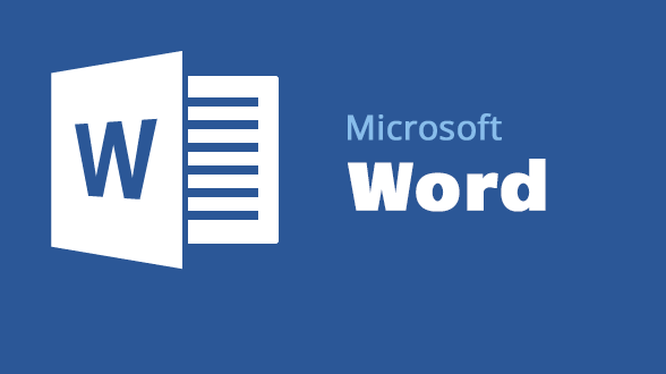Microsoft Word Training and Tutorials. Learn how to use Microsoft Word from these online video tutorials designed to help you write, edit, and design documents.
Where is the WordArt in Microsoft Word 2007, 2010, 2013, 2016, 2019 and 365
Classic Menu for Office combines the old menus and toolbars of Word 2003 with Ribbon in Microsoft Word 2007, 2010, 2013, 2016, 2019 and 365. It is easy to switch two kinds of user interfaces. It is not necessary to spend extra money and time on learning the Ribbons.
How to Bring Back Classic Menus and Toolbars to Office 2007, 2010, 2013, 2016 and 365? |
- Students and educators at eligible institutions can sign up for Office 365 Education for free, including Word, Excel, PowerPoint, OneNote, and now Microsoft Teams, plus additional classroom tools. Use your valid school email address to get started today. Office 365 works like you: everywhere.
- Get help with all of your Microsoft Word questions. Find how-to articles, training videos, and tutorials.
Method A: WordArt in Insert Menu with Classic Menu for Office
You can follow the completely same procedure to access the WordArt command in Microsoft Word 2007, 2010, 2013, 2016, 2019 and 365 as that you did in Word 2003:
- Click the Menus tab;
- Click the Insert;
- Then move your mouse over the Illustrations command item;
- Now you will view the WordArt in the sub-menu. See screen shot (Figure 1):
Figure 1: WordArt command in Classic Menu
Please click to know more information and free download Classic Menu for Office
Method B: WordArt in Insert Tab if you do not have Classic Menu for Office
If you have not installed Classic Menu for Office on your computer, you can access the WordArt command in Ribbon with following steps:
- Click the Insert Tab;
- Go to Text group;
- Then you will see the WordArt button. See screen shot (Figure 2):
Figure 2: WordArt button in Ribbon
Please click to know more information and free download Classic Menu for Office
More Related Articles
- Where is Edit Menu
What is Classic Menu for Office
The software Classic Menu for Office is designed for the people who are accustomed to the old interface of Microsoft Office 2003, XP (2002) and 2000. It brings back the classic menus and toolbars to Microsoft Office (includes Word) 2007, 2010, 2013, 2016, 2019 and 365. The classic view helps the people to smoothly upgrade to the latest version of Office, and work with Office 2007/2010/2013/2016 as if it were Office 2003 (and 2002, 2000).
Screen Shot of Classic Menu for Word
- All new features and commands of Office 2007, 2010, 2013, 2016, 2019 and 365 have been added to the menus and toolbars;
- Without any training or tutorials after upgrading, users can work with Office 2007/2010/2013/2016 immediately;
- Easy to find any command items you want to process;
- Easy to show or hide the classic menus, toolbars and ribbon tabs;
- Easy to install and use. Supports all languages. Free download!
Classic Menu for OfficeIt includes Classic Menu for Word, Excel, PowerPoint, OneNote, Outlook, Publisher, Access, InfoPath, Visio and Project 2010, 2013, 2016, 2019 and 365. |
Classic Menu for Office 2007It includes Classic Menu for Word, Excel, PowerPoint, Access and Outlook 2007. |
It’s easy as a writer to fall into the trap of shiny new toys. There’s an endless number of book writing software programs claiming to be the best at one thing or another, from Microsoft Word to Scrivener to Vellum—and the list goes on and on.
They flash their sexy features at you and promise to be the very thing you need to become the writer you want to be. But sadly, these programs will not make you into the writer you want to be. They offer the world, but often only take your time.
That’s why I would like to offer a defense for using the industry book writing software standard, Microsoft Word.
The Secret to Choosing the Right Book Writing Software
In chapter seven of his leadership classic, Good to Great, Jim Collins addresses the issue of new technology and how businesses should use them. (Before you say that this doesn’t apply to you because you are not running a business, if you are publishing what you write in hopes of someday making money, then you have started a small business, and Collins’s book has loads of wisdom for you.)

When it comes to technology, Collins says that truly great companies understand how and when to embrace shiny new toys. “Good to great organizations,” Collins says, “think differently about technology and technological change than mediocre ones.”
While the average company seeks to use every new technology that arises to solve their problems, great companies use technology as “an accelerator of momentum, not a creator of it.”
Pause for a moment and ask yourself, what does it take to become a great writer?
Like mastering any skill, becoming a great writer takes discipline, focus, intentionality, and hours upon hours of practice.
- Scrivener may be a wonderful tool for dividing up book chapters and helping you organize information, but it is not going to put your butt in the chair and help you bang out those words.
- Vellum may be a wonderful tool for formatting, but it is not going to hammer out chapter after chapter until your plot holes are full.
- While Grammarly may spot potential errors for you, it will not wake you up early before work so you can write and keep you up late at night until the manuscript is finished.
This is what Collins means when he says technologies should be used as an accelerant, not a momentum creator. If you aren’t already putting in the hard work to be the kind of writer you want to be, it doesn’t matter what new writing software you invest in. It is not going to help.
In fact, often new technologies can be a distraction. Each writing software program has its quirks. When we switch to something new, we have to invest time in learning how to use it. Not only are we trying to master the craft of writing, we are trying to master new tech as well. And if we are always chasing the new thing hoping it will make us into the writers we want to be, then we will exponentially slow our progress as writers.
So what is a new writer to do? If the fancy programs aren’t going to solve your problems, where should you turn?
3 Invaluable Strengths of Microsoft Word
Microsoft Word Free Online
When you are learning the daily discipline of writing, I recommend using Microsoft Word for three simple reasons. (In a recent article comparing Scrivener to Word, Joe Bunting explained the strengths of Word. I recommend you go back and look at the reasons he laid out as they make my case for the software. I will do my best not to repeat his arguments.)
1. Word Is the Foundation
Microsoft Word is the standard all the other programs are built on. Word was one of the first writing software programs on the scene, which means it set the tone for the features programs need to have, and it continues to do so. As Microsoft Word goes through evolutions, the other writing software programs follow suit.
Therefore, if you can master Word, you can master any of the others because you understand where they are coming from.
When you are developing the daily discipline of writing, you might as well do it on a program that is going to help you graduate to something else in the future. Once you understand your strengths and weaknesses as a writer, you can then make a decision about what specialized technology you need to master. And if you have learned how to be a writer on Word, you will easily make a jump to something else because its creators had Word in mind when they made it.
2. Word Is Common Among Non-Writers
When I finish a book, the first thing I do is send it to beta-readers. Before I publish it, I need fresh eyes on it. Because I have written it in Word, anyone can read it.
While fancy book writing software programs might be popular among writers, Word is the standard for professionals. It’s in every university. It’s at almost ever business. Even if a business isn’t using Word, they have a way to convert and read Word documents.
Being able to attach your book to an email and send it off to a friend for a second opinion is invaluable. Word allows you to do that simply, without hassle.

Additionally, if you turn on the “Track Changes” feature, Word allows those readers to review your work without making permanent changes to the document. When they return the book to you, you won’t have to search it for changes. They will be marked and ready for you to accept or reject.
3. Every Platform Accepts Word
I’ve used Word to write and “publish wide” three novels, two short stories, and four compilations with other authors. This week, in fact, I published a new short story using Amazon KDP, Kobo Writing Life, and Draft to Digital. While each platform wants something a little different, all three distribution platforms will accept a document I can create with Microsoft Word.
When you do finish your work and it is time to distribute, Word has what you need to get the job done.
Choose Wisely
While other book writing software programs might have flashy features that promise to make you an incredible writer, until you’ve built the habits and disciplines you need as a writer, until you know your strengths and weaknesses, don’t be lured in by their siren song. Rather, learn to be a writer on the industry standard.
Those other programs will only accelerate what you are currently doing. They won’t create new momentum. If you can publish with Microsoft Word, then the other programs will feel familiar when you are ready to try something new.

If you’re looking for programs to accelerate your writing, check out our list of the Top 10 Pieces of Software for Writers (hint: Microsoft Word is #6!).
Where Can I Download Microsoft Word For Free
Do you use Microsoft Word for your writing? What makes it useful for you? Let us know in the comments.
Where To Get Microsoft Word For Mac

PRACTICE
Where Can I Microsoft Word For Windows 7
Today, focus on your writing, not the medium you’re using to write it. Open up Microsoft Word, or if you want to go back to true old school basics, pull out a pen and paper. Then, take fifteen minutes to write a story about a character who’s always excited for the next best thing.
When you’re done, share your writing in the comments, and don’t forget to leave feedback for your fellow writers!